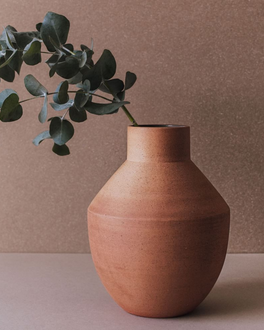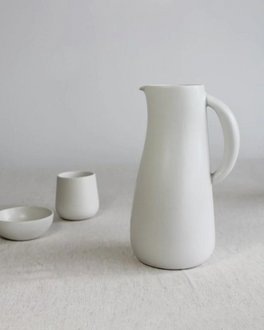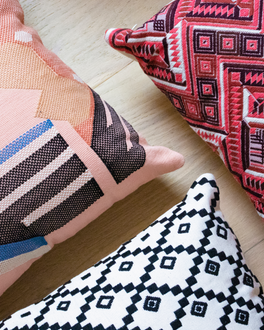What appears to be a simple piece at first glance, is in fact a culmination of centuries of ancestral knowledge, weeks of production and meaningful contributions by three talented families in two Mexican states. Our blessings beads are more than a decorative piece. They’re the embodiment of cultural pride and a diversity of materials sourced from nature. Further to this, they’re produced by makers from three indigenous groups – Mixe, Tzotzil and Zapotec.
The main focus of these pristine works are the hand-formed, pit fired pottery beads. The clay is sourced from the central valley of Oaxaca and every bead is individually rolled by a master artist named Patricia. Over a decade ago, she underwent open heart surgery. In her recovery, her doctor cautioned that she couldn’t lift the heavy, utilitarian pieces that she’d previously been making. With this, her creative practice evolved to smaller, more intricate pastillaje works, which have become her specialty.

Our custom beads are rustic, unglazed and pit fired in a traditional kiln. The beige strands showcase the natural hue of the clay, while the darker tones are the result of a smoking process. After the firing, the pieces are pulled from the kiln and briefly plunged into a bath of organic plants. This results in mottled tones of matte beige, grey and charcoal. The longer the pieces are left in the mix, the deeper the charcoal hue.

The inception of these beads is also the result of a necessary focus that evolved from the complexities of the human experience. At the height of the pandemic, Patricia lost her husband and her mother. Given this, she now cares for her elderly father in his home during the week. She isn’t able to produce as much pottery as before, since she’s no longer in her workshop on a daily basis. That said, income generation is still essential for her household, so she brings clay with her during the week and works on them between elder care. Additionally, her three adult children are all pottery makers, so they collaborate on larger orders, when needed.
All of our blessings beads are threaded onto handmade agave string, which is made in the Sierra Mixe region of Oaxaca. The agave leaves are cut and stripped of their outer green skin. The silky inner material is brushed free of tangles, then the strands are individually counted. They’re then rolled on the thigh of the artisan in order to create a durable, tight string that can be cut without fraying. It can be made to varying degrees of fineness, with this particular string being the thinnest that they’re able to produce.

While it was once common for locals to create textiles, hammocks, bags and rope from agave, the rise of synthetic materials lead to the gradual loss of this tradition, as did the common practice of bartering. Given the incredible skill, patience and time required to create handmade works from agave – which often aren’t fairly compensated – many of the younger generation have eschewed these family traditions in favour of work in the city or even abroad. Given this, there’s risk of this generational knowledge being lost in future.
The artisans who produce our handmade string create our material when they have time between their subsistence farming. With this, we plan our orders well in advance, out of respect for their personal timelines. As with all of our collections, in paying their asking price without haggling, our hope is not only to support and promote these traditional processes, but also to play a small role in encouraging younger generations to carry on these traditions.

Our blessings beads are finished with a handmade tassel that’s comprised of rustic wool from the highlands of Chiapas that’s washed, carded and expertly spun on a drop spindle – a tool that’s known locally as a malacate. This intensive process requires an enormous amount of skill and patience and is typically done by the women of this region. This wool is no exception, as it’s processed by an indigenous Tzotzil artist named Micaela. By in large, she employs her hand spun wool for sublime textiles that she weaves on a traditional backstrap loom.
In an increasingly industrialized world, our focus is drawn away from how things are made. With this, we’ve largely lost our connection to the pieces that surround us. In sharing the not-so-simple background of our blessings beads, our aim is to highlight the personal stories and creative legacies behind these pieces. These beads can be employed in the daily ritual of counting blessings, but they also make for an intriguing decorative addition to a bedpost, wall, placed in a bowl on a table, or even worn around the neck, for those who’d like to take their blessings with them.






























